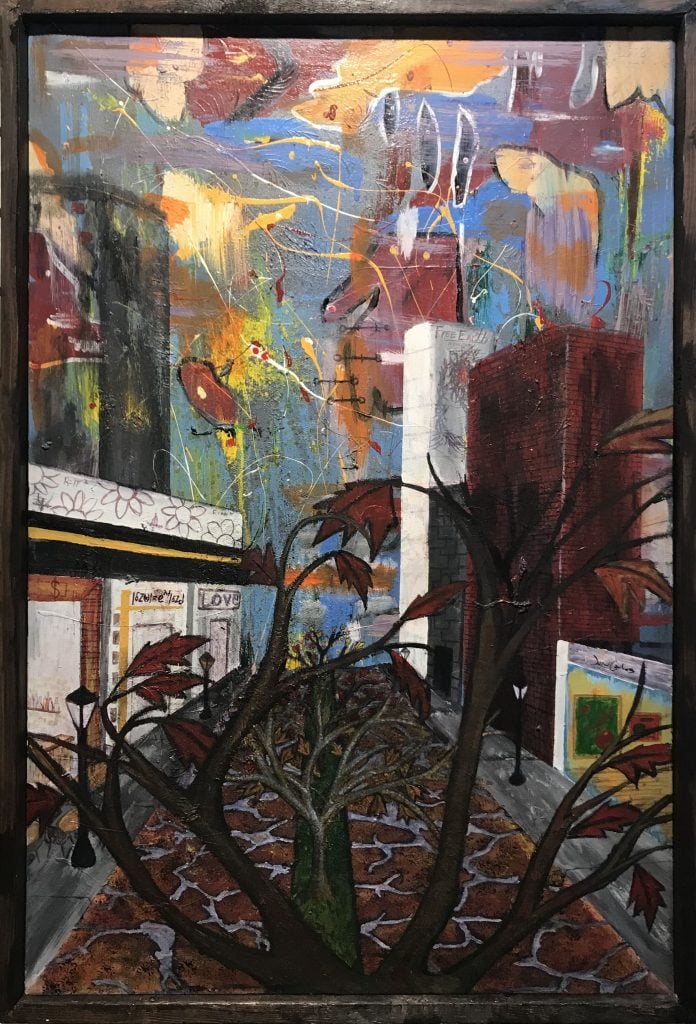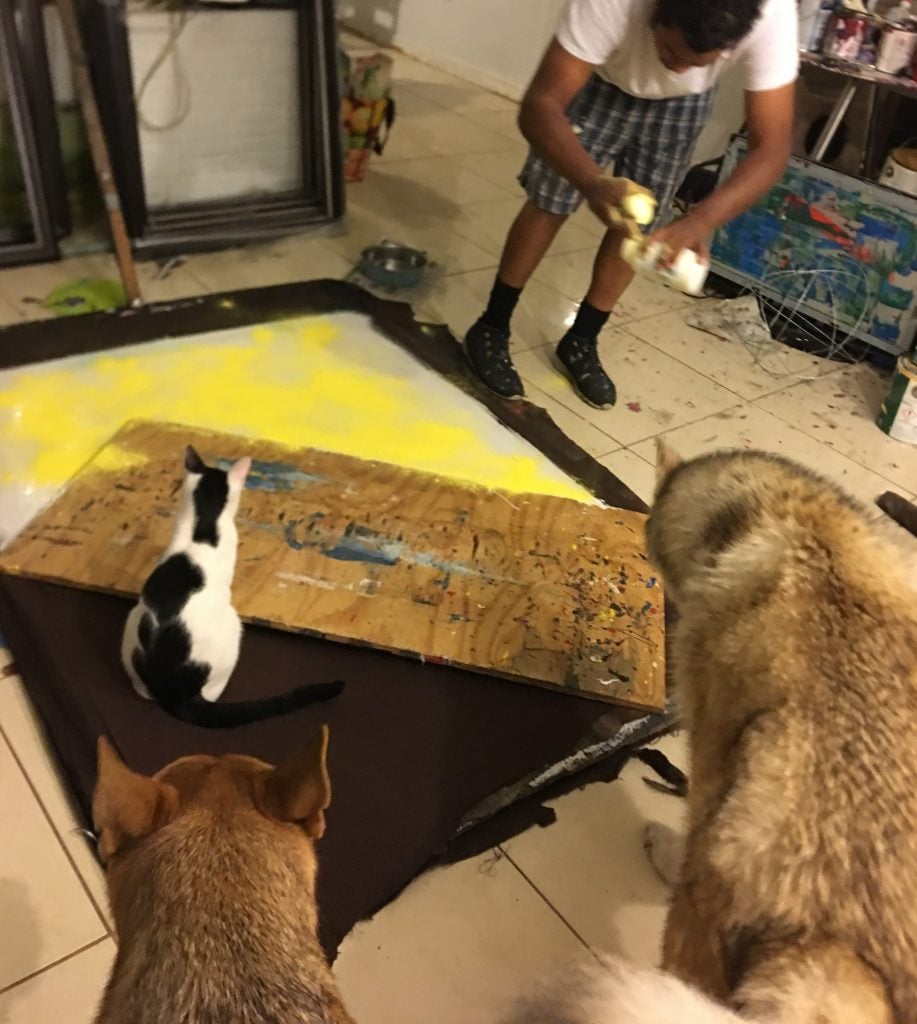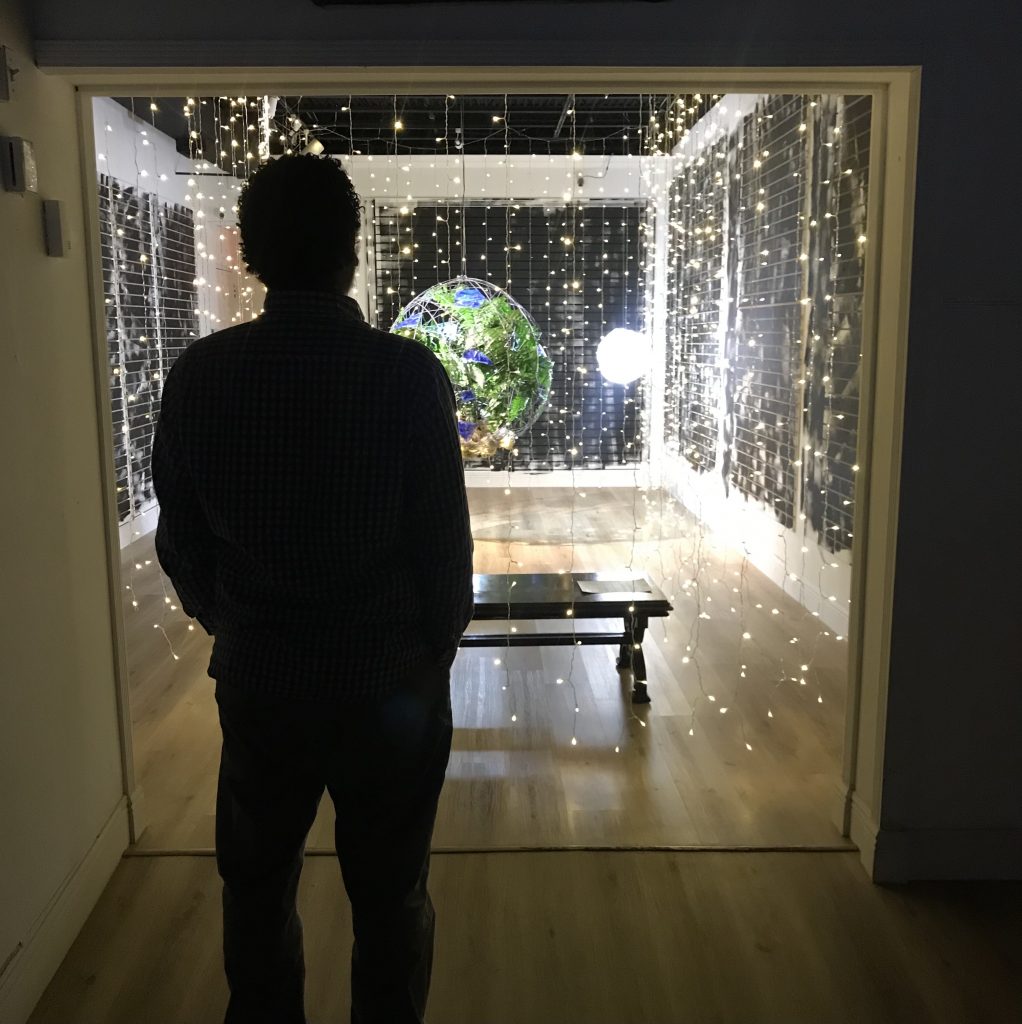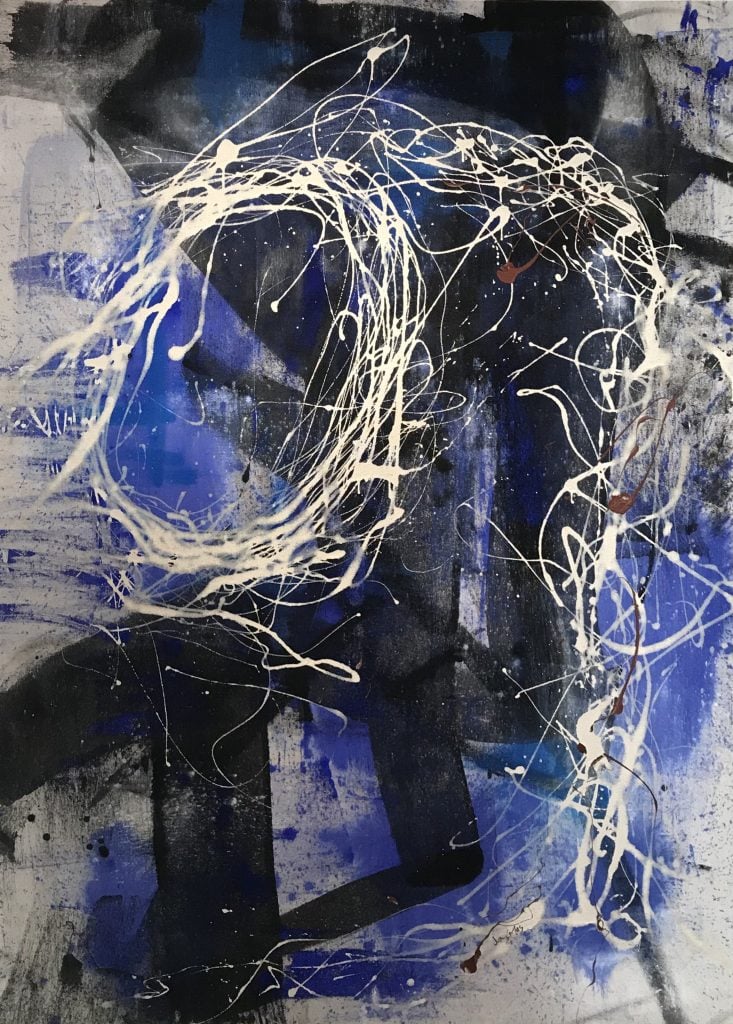Artist JuanCarlos rLora on How Adopting a Cat Led to a Deeper Interest in Animal Rescue Missions


Artnet Gallery Network

Artist JuanCarlos rLora is full of energy and ideas that spill out from his paintbrush and his conversations. He doesn’t believe in ascribing to one style of painting. Instead, rLora adopts new approaches in each of his series, of which there are many.
In his “Flor Del Sol” works, which were on view at Fort Lauderdale’s ArtToSaveLives Gallery last fall, colorful splatters and drips of paints come together to form abstract flowers. Sometimes the work has a more surrealistic feeling; other times, more realist. Whatever it takes to tell the story, he says.
On the flipside of rLora’s stylistic variance, the artist possesses a crystal clear life mission: he wants, above all else, to help animals living on streets—a goal he shares with his gallerist Luba Kladienko-Ramirez, founder of ArtToSaveLives. In fact, eighty percent of profits from the sale of his works are devoted to funding animal rescue missions.
We spoke with the artist, who told us how one kitten set off a lifelong mission.

JuanCarlos rLora in the studio with some helpers. Courtesy of the artist.
If you had to describe your work in a few sentences, what would you say?
My work is the result of my constantly active brain that I cannot really stop. I kind of let it take me on whatever journey it wants to go. I just experience and document the trajectory with paint. It’s like a journal that speaks in color frequencies and I’m sort of like its instrument, standing beside it, for when I have to come in and record the scenario.
You’re very involved in animal rescue. Can you tell me more about how you became involved with this cause?
Well, we were immersed into that life by fate. My manager Luba and I started working together in our college days. We were both beginning our respective careers, we had to begin at the bottom—she started booking me for street fairs, and various art events. Soon after, we had begun making some money, nothing too crazy at that level, but we were able to rent a place where we could show the work. It was a residential house turned into a gallery space.
I always knew Luba was a cat person, so as a gallery-warming gift, I went to the local shelter and adopted Zoey, our first gallery kitten. Then I said, well, if Luba gets a cat then I want a dog, so we found these puppies that were rescued by a foster family from a shelter, right before they were to get euthanized due to the lack of space. So we went and got Luna from the fosters. That was the extent of the plan with animals at the gallery, in terms of us having any more. Then one evening, walking Luna, I found an abandoned puppy at the dog park next to the apartment complex, and so naturally took her in and named her Nova.
You had an interest in animals before this though, right?
Yes, I had been a zoology major in college and I was volunteering with a surgical team at the local shelter when the gallery opened. During one of my volunteer days, someone had left an empty pizza box right in the parking lot, with eight puppies inside, and I brought them to the gallery. I guess by now you see the projection. But honestly, we’ve both always been huge animal lovers and so with our careers, we decided that we wanted to do something bigger than ourselves and give back somehow, naturally for us, helping animals felt just right. Since the very beginning, we have simultaneously been a private animal rescue, mostly funded by my art sales.

JuanCarlos rLora at ArtToSaveLives Gallery.
You had hyperactivity as a child. How do you think that has influenced your art-making?
As a hyperactive kid, I really had no idea of what I wanted to do with my life. It all came in in waves. I would decide, “I want to be a philosopher!” Then I would spend months obsessively learning about the ancient philosophers and their teachings. I would idolize them and learn everything I could get my hands on. Then all of a sudden, I’d drop the entire thing because I had decided now that I wanted to become a musician. Then I would start learning instruments and musical notation all the way until I would register all the info and get bored again. Then I decided I wanted to be a poet, and then a scientist, and on and on I went.
The only one thing I kept always doing as a disconnect from my own head was painting every night until I’d finally be tired enough to fall asleep. Insomnia is a big part of the condition, so painting was my only pacifier, my daydream, journey, and lullaby. So naturally, all of that information I’ve learned in the past is constantly floating around in my head, so I use it in my work. I think it’s the best use I could ever have for that information.
You studied with the artists Candido Bido and were mentored by Turkish-Dominican painter, Aquiles Azar. What are the lessons you learned from each of them?
Yes, with Candido Bido, I was very young and hyperactive, but he still taught me all the rules. So much so, that I think he engraved them in me in the sense that I don’t recall having ever learned a specific technique, but when I execute it on canvas, I feel as though riding a bike, so to speak. With Aquiles, I was older already, doing my first stint in college, and I would fly to the Dominican Republic and spend all my summers hanging with him at his home studio and seeing his amazing work and how he ignored the rules of art at points, yet he was older and had an amazing career. I remember that he hadn’t seen my work, but when I met him he instantly knew I was an artist. Really weird, but awesome. From him, I learned about life as an artist more than anything. He would take me to meet the gallery owners where his work was displayed or the museums that had his work as part of their collection; he showed me the inner workings of the artist’s day-to-day. So in a nutshell, I would say Candido taught me the strict rules of art and Aquiles taught me how to break them.

JuanCarlos rLora, Summer Sky. Courtesy of ArtToSaveLives Contemporary.
How do you like to work in the studio? Do you have a routine for your days?
At the studio, I generally have several pieces being worked on at the same time, staple-stretched prepped on each wall with the paint colors I’m working with near the piece. I could be doing something on one piece and the other piece in the next room starts speaking to me, so I would quickly finish whatever I’m doing here and move onto the other piece, to carry the conversation with the painting. So since that is happening, I can either be listening to music or completely have forgotten to turn the music on at times, so I guess, no rituals, only completely immersed in painting or sculpting, or whatever project I’m up to.
If you could own any work of art in the world, no restrictions, what would it be and why?
Aw, only one? It would be awesome to own the original manuscript of Charles Darwin’s On the Origin of Species—it’s art and science! Or from “Hilma af Klint: Paintings for the Future”—I’d take all of them! As you can see, I’m undecided about many things in my life, except for my work, and my desire to help animals.
